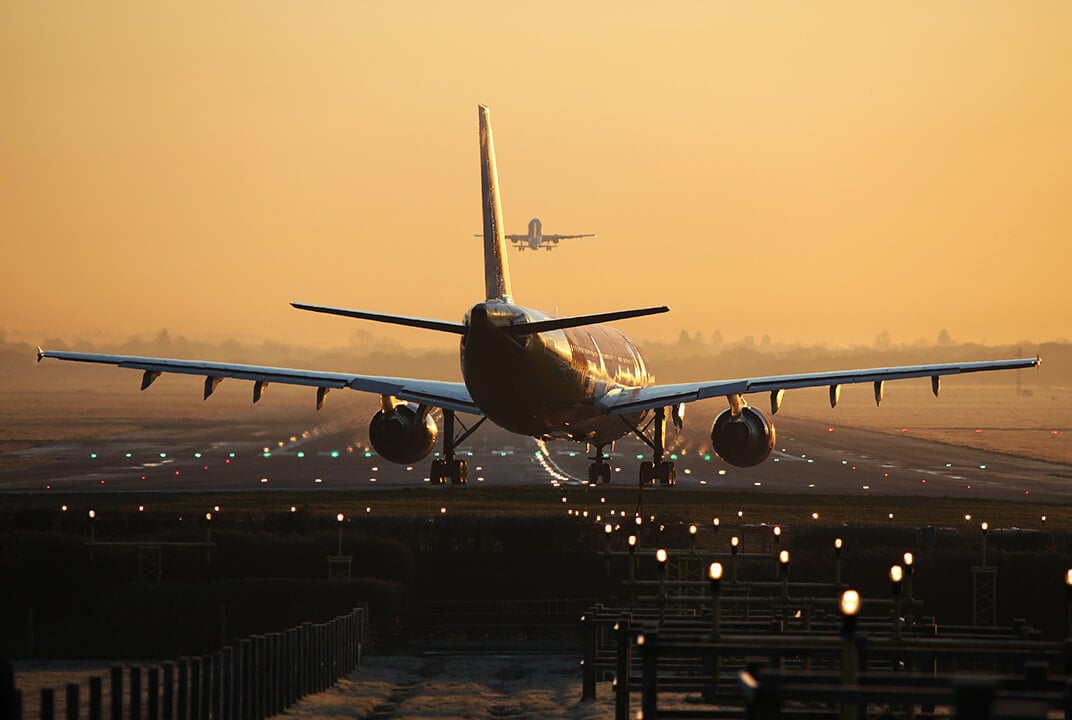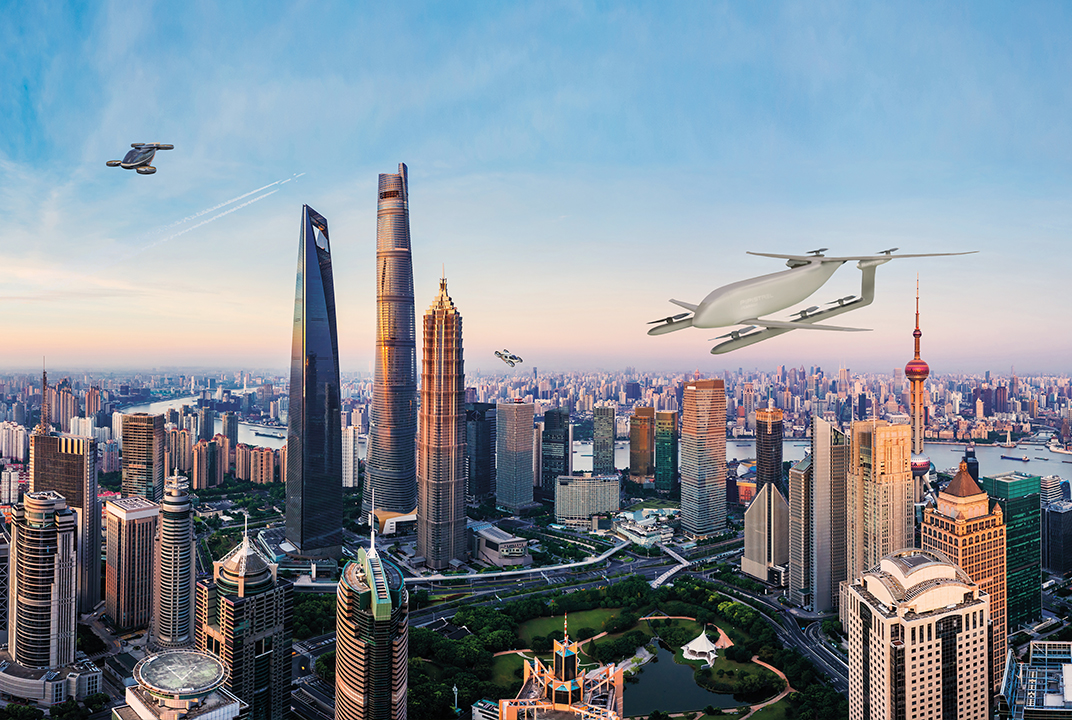Insight | Collaboration and innovation the recipe for UAV success, believes solutions provider A-TechSYN
Collaboration and innovation the recipe for UAV success, believes solutions provider A-TechSYN
Aviation
Collaboration and innovation the recipe for UAV success, believes solutions provider A-TechSYN
The UAV ecosystem – that Inmarsat and A-TechSYN are at the heart of – is not only mutually beneficial, it is pushing the market forwards and is a catalyst for wider societal transformation.
What’s in a name? For unmanned aviation systems (UAS) solutions provider A-TechSYN it’s literally everything, as its passionate CEO Gokhan Celik explains. “A-TechSYN actually stands for advanced technologies with synergy,” he says. “We want to build up synergies across the UAV market. With Inmarsat we are doing just that. One and one doesn’t make two. It makes 11.”
This bold, forward-thinking and enthusiastic ambition cuts straight to the heart of the UAV sector. This space is built upon new ideas, new ways of working and collaboration – the synergy in A-TechSYN is integral to this. As Celik notes, the future will be built on the UAV sector’s burgeoning ecosystem and its strong partner networks and he is excited about his company’s developing partnership with Inmarsat. Not just because of the practical insights it offers, but because it opens doors for A-TechSYN. And likewise introduces other players to the opportunities A-TechSYN offer.
“And now we’re getting into new projects,” he says. “We’re getting into lots of new use cases. We’re talking to a lot of global companies because of our relationship with Inmarsat. That’s what I like about working with Inmarsat – being involved in that network.”
A company that gets things done
“For us, there’s nothing that’s impossible. Hard is ordinary; impossible just takes time.”New technologies depend upon the vision and can-do attitude that comes with a vibrant and determined entrepreneurial spirit. A-TechSYN mirrors Celik’s ambitious and energetic imagination.
In 2013, and with tremendous foresight, Celik surmised that unmanned aerial vehicles (UAVs) were the future. As such, he founded A-TechSYN. The company began with “a grand plan on what to do, how to start and what to aim for”.
He laughs: “Of course, nothing went according to the plan. But one thing was correct. UAVs really are the future.”
Initially, it focussed on launching a commercial autopilot, recognising that this was a gap in the market that the large aerospace companies hadn’t moved into. They began experimenting putting autopilot into airframes, which then opened up another market – selling custom solutions consisting of airframes with autopilot built in.
Today, A-TechSYN has evolved into a “one-stop shop” for the design and building of software, hardware, electronics and airframes for UASs.
“We are a company that just gets things done,” he explains. “We don’t rely on others to do things. We have everything inhouse.”
Successful partnerships key to innovation
It’s this ‘build fast, test fast, learn fast’ ethos that has seen A-TechSYN establish a productive partnership with Inmarsat – and also cross into relationships with some of our other partners: Cobham and Altitude Angel to name just two.
Indeed, A-TechSYN was one of the OEMs invited to test the Cobham AVIATOR UAV 200, an airborne terminal that allows for Beyond Visual Line of Sight (BVLOS) operations, at a Pop-Up Lab we initiated in early 2019.
“It was a great idea of Tony’s (Inmarsat’s Senior Director Commercial UAV & UTM, Anthony Spouncer),” reflects Celik. “Essentially he was just saying: ‘I have the services, they have the modem, you have the UAVS… just put them together and fly.”
Being one of the companies that successfully integrated the modem into its systems – and having performed a positive test flight – this led to further collaborations. It was an A-TechSYN airframe that demonstrated the benefits of satcom connectivity at another Inmarsat-facilitated Pop-Up Lab last year. Integrating with Altitude Angel’s pop-up UTM in Turkey, the airframe was monitored by a pilot 60km from take-off, with connection and tracking being provided by Inmarsat’s global ELERA L-band satellite network.
During the flight, the pilot unexpectedly picked up conflict with another aircraft in the area and they were able to navigate the situation successfully and safely. It was a huge breakthrough for all parties that has cemented A-TechSYN’s relationship with Inmarsat.
“Since then,” Celik responds beaming, “Tony's always coming up with something new and exciting.”
Adding benefit to safety, security and peace
Ask Celik about the potential of UAVs to enable societal transformation and he really gets excited.
“It’s not just about transportation of cargo or the transportation of people,” he explains. “It’s changing the way people think about doing things. Exciting applications like pipeline and powerline inspections, railway inspections, roads... Using UAVs will increase the safety of roads, railways and transportation so much. Healthcare operations too. If you have a donor in the UK and a patient in Ireland, you need a helicopter to deliver it. But this can easily be done by a drone. Moreover, it’s much cheaper and safer.”
He also points to benefits for agriculture, looking at the field from above, getting samples, feeding plants he suggests, and the illegal dumping of waste at sea. “There's no way you can prevent that unless you have a third dimension, like the top [aerial] down and then say, ‘OK, I am monitoring this’.”
He continues passionately: “I think we’re making a big contribution to safety, security and peace. We think of ourselves as a peace-making company.”
Robust and reliable connectivity can help overcome challenges
Of course, there are still challenges. One of the barriers to market is the lack of regulation in the UAV space. Celik acknowledges this. He admits that A-TechSYN is still in the process of getting permission to freely fly its systems anywhere. Success, he says, would be integration – commercially – with a variety of systems. And for it to be easy – just like using a car he says.
Thankfully, the test flights and demonstrations it has successfully undertaken – like the Pop-Up UTM in Turkey for example – are proof to regulators that this vision of the future can be a reality.
And this is where Inmarsat can help. Satcom, says Celik is crucial in demonstrating that UAVs are safe. Flying out of the range of radio frequency requires satcom. It’s a catalyst.
“You need to have command and control, on a reliable system, with the minimum latency, and also at affordable prices, to show the regulators,” he argues. “Because most of the air risk cases are based on what happens when you lose control of the aircraft. The most probable reason is that you lose radio line of sight because you fly close to the ground and are far away or some structure or mountain is between the operator and the UAV. But with satcom, you can just say: ‘That never happens’.”
In short, the unlimited possibilities that UAVs can deliver are reliant on robust, dependable connectivity. “We need satcom to realise all of our goals,” Celik suggests. “Because without it, and without satellite services, the range of our products is limited.”
And so, the entrepreneurial spirit that A-TechSYN exemplifies and the dependable connectivity that we offer – allied to giving them licence to push the boundaries of what is possible – has crafted the perfect partnership. A relationship that really can unlock the potential of this sector.
“Inmarsat has a lot of knowledge,” concludes Celik. “It knows how to communicate. And we can demonstrate to everybody how it works. It’s not theoretical anymore. And that’s what I like about Tony and his team. Instead of asking people to sit down and calculate whether something is possible, they just call us up and ask us to try something out. To see what will happen. And we say: ‘Of course. Why not?’”


